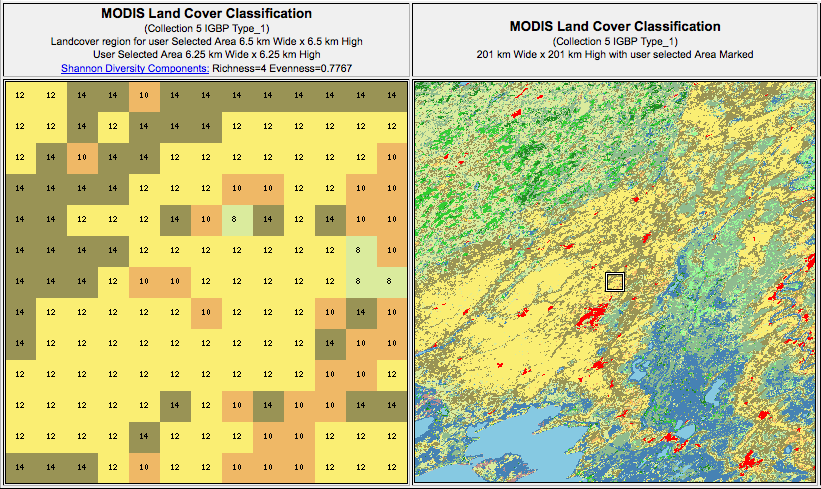| Carencro, LA |
| Return to Regional/National map |
| County: Lafayette |
State: LA |
|
| Active Since: 2004 |
Observer: Harper |
| Lat/Long: 30.3, -92.0 |
Landsat WRS Path/Row: 23/39 |
| MODIS TIle V/H: 5/10 |
MODIS Line, Samp: 1158.24, 66.26 |
Site/Hive Description:
Hive located on coastal plain, in morning sun, afternoon shade. Main forage is Chinese tallow, white dutch, buttercup, privet hedge and many other wild flowers.
Electronic weighing of a pallet supporting from 2 to 4 hives. The device consists of three load cells (manufactured by HBM) and an AED Model 101 interface card in a PC data logger. Weight measurements logged along with some meteorological data were recorded every two minutes from 2004 to 2008, and every minute in 2009. Two to four colonies of Russian bees. Brood chambers are 1 standard and 1 medium with a queen excluder and 3 to 4 mediums on each hive for honey storage.
|
|
|
|
MODIS Subset Data (from the ORNL DAAC)
Red dots are the average of all pixels with acceptable quality (see landcover extract below for area covered).
Blue dots are the center pixel only (point is not plotted if the pixel is of unacceptable quality). |
| | | | | | | | | | | | | | | |
| NDVI The Normalized Difference Vegetation Index (NDVI) is the ratio of the difference between visible (red) and infra-red (IR) wavebands to the sum of these bands.
NDVI = nir - red / nir + red
NDVI provides an indication of the amount and vigor of vegetated surfaces.
NDVI has been widely used with multiple generations of satellite data.
|
 |
EVI
The Enhnaced Vegetation Index (EVI) is a more complicated combination of wavebands compared to the more widely used index, NDVI. The advantage of this newer index is improved sensitivity in high biomass regions and reduction in atmospheric influences.

where,
pNIR = NIR reflectance
pRed = red reflectance
pBlue = blue reflectance
C1 = atmosphere resistance red correction coefficient
C2 = atmosphere resistance blue correction coefficient
L = canopy background brightness
G = gain factor
|
|
The MODIS sensor on the Terra satellite platform provides us with 16-day composite measures of NDVI/EVI throughout the year. NASA distributes MODIS data from many of their distributed data centers.
|
|
|
|
MODIS Land Cover


MODIS Data Subset Citation:
Oak Ridge National Laboratory Distributed Active Archive Center (ORNL DAAC). 2007. MODIS subsetted land products, Collection 4. Available on-line [http://www.daac.ornl.gov/MODIS/modis.html] from ORNL DAAC, Oak Ridge, Tennessee, U.S.A.. |
|
| |
| |
|